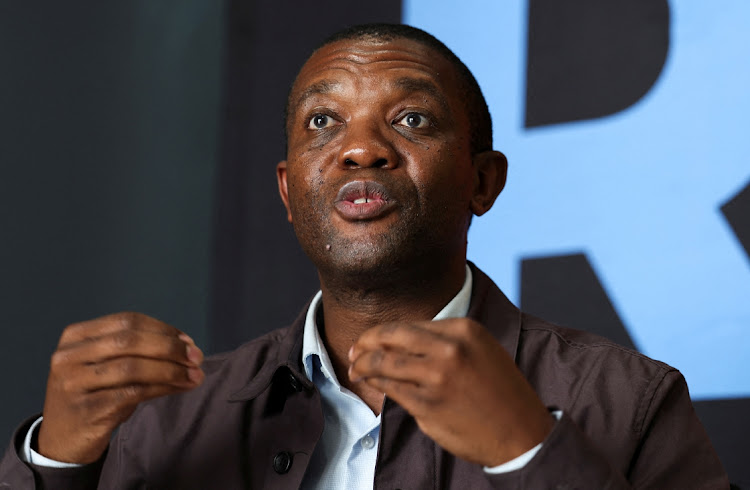South Africa’s Road Accident Fund teeters on the brink of collapse

Songezo Zibi chairs the Standing Committee on Public Accounts oversight inquiry into the Road Accident Fund. Photo Credit- BusinessLive
In the shadow of South Africa’s chaotic highways, where minibus taxis weave perilously through traffic and potholes claim more victims than headlines admit, the Road Accident Fund (RAF) was meant to be a beacon of solace, a safety net for the shattered lives left in the wake of crashes. Yet, as of July 15, 2025, Transport Minister Barbara Creecy pulled the plug on the entire 11-member board, declaring the institution in “a state of advanced collapse.” This bold house-cleaning, met with cautious applause from weary observers, came after years of scandal, soaring deficits, and a litany of unfulfilled promises. Creecy wasted no time: she installed an interim board led by veteran turnaround specialist Kenneth Brown and convened a panel of independent experts to dissect the fund’s festering wounds. Meanwhile, Songezo Zibi, chair of Parliament’s Standing Committee on Public Accounts (Scopa), launched a no-nonsense inquiry, urging witnesses to stick to hard evidence: “Just tell us how what has happened at the RAF affected you personally and your families.” For those who’ve watched the RAF lurch from crisis to crisis over decades, the moves evoke a weary déjà vu, another chapter in a saga of fleeting reforms that mask deeper, systemic rot.
The RAF’s origins read like a cautionary tale of good intentions paved over good sense, stretching back more than 80 years through four failed attempts to compensate the uncompensated. It began in 1942 with the Motor Vehicle Insurance Act, a private-sector gamble that bankrupted insurers almost overnight. By 1965, the state intervened with the Motor Vehicle Accident Fund as a reinsurer, only for costs to spiral. The 1986 pivot to a fuel levy marked a radical “communist philosophical shift,” funding payouts through social taxation rather than individual policies, but it birthed a monstrous hybrid: socialized money funneled through profit-hungry private agencies. Enter the Multilateral Motor Vehicle Accidents Fund in 1989, a Frankenstein of levy-funded equity and privatized claims handling that unleashed “rampant fraud, spiralling costs and a deficit that doubled every three years.” The RAF Act of 1996 promised salvation by centralizing control and ditching the agencies, yet it preserved the “original sin”—a fault-based system rooted in common law delicts, where victims must litigate to prove negligence. Imagine: a welfare provider forced into courtroom gladiatorial bouts, doubling as an indemnity shield for careless drivers. In 2023/24 alone, the fund shelled out R103.1-million on panel attorneys, turning straightforward aid into a lucrative legal bonanza that threatens to bankrupt the very people it serves.
Fast-forward to 2025, and the RAF’s ledger is a horror show of half-a-trillion-rand liabilities, with the Auditor-General slapping a R340-billion tag on 2022/23 claims alone—capped by three years of dismal audits. Governance has devolved into what critics call “accountability theatre”: the board sued the Auditor-General and Treasury to cling to lax Ipsas 42 accounting, slashing reported debts from R330-billion to a mirage of R27-billion and vanishing thousands of valid claims. Procurement scandals topped R1-billion, per the Special Investigating Unit (SIU), with cash siphoned to attorneys’ kin and an RAF executive’s family trust. Default judgments ballooned from R1.64-billion to R3.99-billion in a single year, thanks to one lawyer juggling 1,500 cases. Former CEO Collins Letsoalo pocketed R9.4-million amid SIU probes into his role, while key posts like chief claims officer languished vacant for over two years. Echoes of the past abound, fraud, deficits, and finger-pointing, leaving the RAF’s own strategic plan to warn it “is unlikely to survive the next five years without legislative reform.” Stakeholders from Creecy to Zibi decry the mess, but experts whisper that without uprooting the fault-litigation nexus, these are just deck-chair rearrangements on a sinking ship.
Creecy’s lifeline dangles in the form of the long-gestating Road Accident Benefit Scheme (Rabs) Bill, a blueprint for a no-fault utopia where benefits flow swiftly without blame games, slashing legal fees and accelerating payouts. The interim board, under Brown’s steady hand, is hustling to plug vacancies, cozy up to the SIU, and tame those default judgments, even rolling out the glitchy Integrated Claims Management System (ICMS) for a “single source of truth” on claims. Yet doubts linger: the Auditor-General scoffs at ICMS’s reliance on a court-rejected RAF 1 form, minus vital medical checks and milestones. Flash back to 2011’s Constitutional Court thunderbolt in Mvumvu, where caps on taxi passengers’ claims, R25,000 for a breadwinner crippled in an unlicensed bakkie, were deemed discriminatory against black South Africans, gutting the RAF’s social mandate. The 2012 Transitional Provisions Act patched the hole with fiscal prudence, averting a R3-billion retrospective bomb amid a R40-billion deficit, but it sowed fresh inequities without touching the core flaws. Political courage will decide if Rabs flies or fizzles, as history mocks the parade of ministers who’ve nibbled at edges but shied from the overhaul.
As the inquiry grinds on and experts pore over the debris, one truth glares through the wreckage: the RAF isn’t just mismanaged, it’s miscast, a noble social insurer shackled to adversarial law that pits victims against their own fund. Creecy’s decisiveness earns nods of respect, but without shattering the fault-based chains and forging a truly equitable path, the cycle of collapse will replay. For the families nursing scars from crumpled fenders and shattered dreams, the wait for real reform feels eternal—a stark reminder that on South Africa’s roads, justice shouldn’t demand a courtroom toll. The Titanic of the tarmac may yet be salvaged, but only if leaders steer clear of the icebergs of inertia and vested interests.
Frequently asked questions on South Africa’s RAF
What prompted the dissolution of the RAF board in July 2025?
Transport Minister Barbara Creecy acted due to the fund’s “advanced collapse,” marked by massive liabilities, audit failures, corruption probes, and governance breakdowns.
What is the RAF’s ‘original sin’ according to the article?
The core flaw is operating as social insurance funded by fuel levies while relying on a fault-based legal system that requires proving negligence, leading to costly litigation.
How large are the RAF’s current liabilities?
Estimates exceed R500-billion, with the Auditor-General noting R340-billion for 2022/23, though disputed accounting reduced reported figures to R27-billion.
What is the proposed solution via the RABS Bill?
It aims to introduce a no-fault scheme with defined benefits, eliminating the need to prove fault, speeding up payouts, and cutting legal costs.
Why does the article reference the 2011 Mvumvu judgment?
The Constitutional Court ruled that claim caps for taxi passengers discriminated against black South Africans, exposing the RAF’s failure as a social security provider and leading to partial reforms in 2012.




